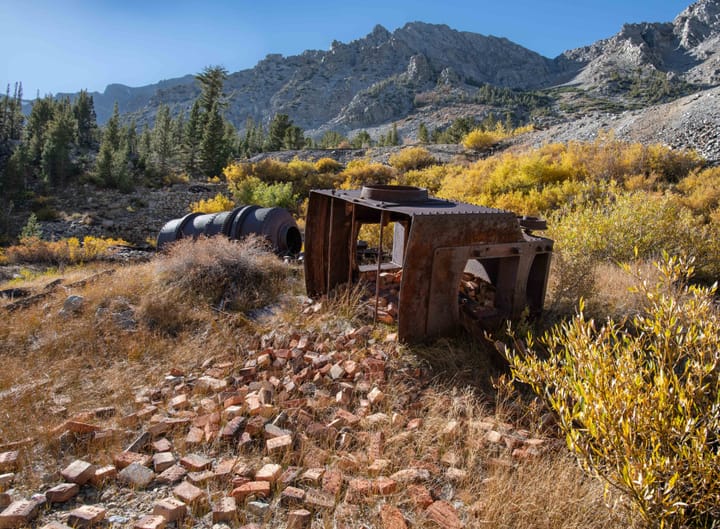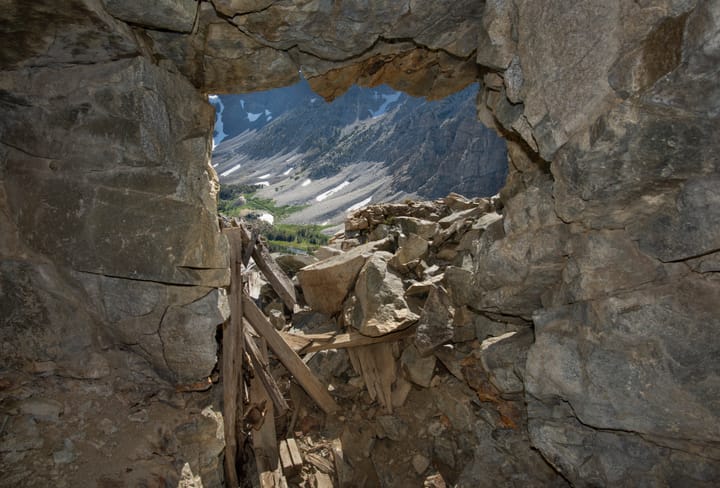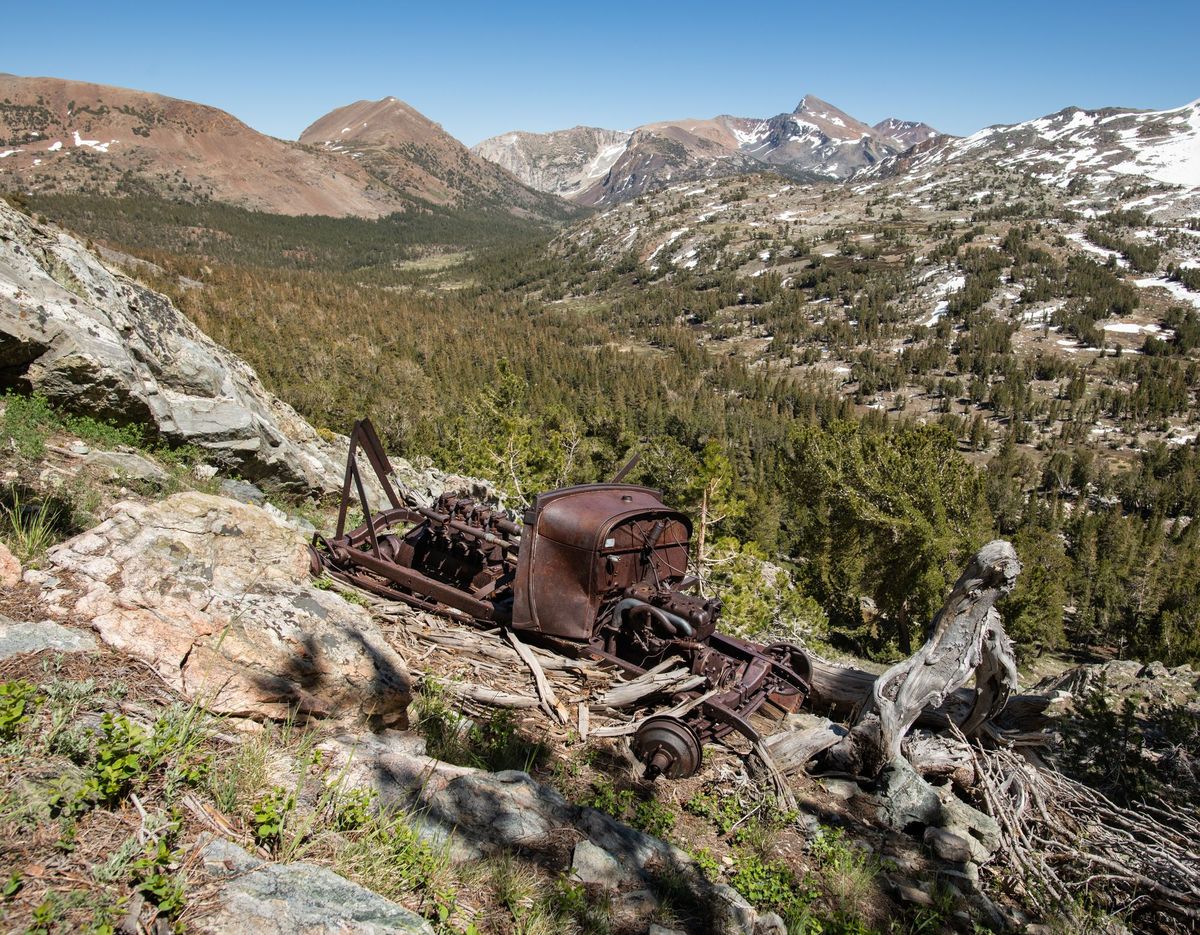Not far from the Tioga Pass entrance station to Yosemite National Park lie the remains of the Hess Mine, one of the more accessible 1940s-era tungsten mines in the High Sierra. Three widely-separated claims comprised the mine: the main claim at the north end of Steelhead Lake; a small middle claim above the west shore of Wasco Lake; and an even smaller claim on the large ridge just west of Saddlebag Lake. Steelhead and Wasco Lakes are nestled in the Twenty Lakes Basin, a beautiful high-elevation bowl surrounded by 12,000-foot peaks, just outside the eastern Yosemite boundary. The Hess Mine produced only limited quantities of low-grade tungsten ore, eventually closing in the early 1960s.
Read next

May Lundy Mine
Just northwest of Mono Lake lies Lundy Canyon, home to a Mono County campground, a large lake, and a small resort with a few cabins and campsites. Most visitors today come for the fishing, hiking, and fall color, probably unaware that this quiet area was once home to a booming

Tip Top Mine

Big Emma Mine
Hidden in the mountains just northwest of Mono Lake lie two of the most beautiful canyons in the Eastern Sierra, Lundy and Lake Canyons. Perched high on the wall of Lake Canyon, in a seemingly unreachable location, sits the remains of the Big Emma gold mine. This adventurous all-day hike
